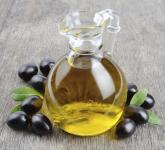Two variations of the Mediterranean diet were associated with a lower risk of peripheral artery disease, compared with a control diet, in a secondary analysis of the PREDIMED randomized clinical trial, as reported in a Research Letter to the editor in the January 22/29 issue of JAMA.
Among older adults at high cardiovascular risk, following a Mediterranean diet supplemented by extra virgin olive oil (EVOO) for a median of 5 years was associated with a reduced risk of PAD (hazard ratio, 0.34), compared with the control diet. Similarly, following a Mediterranean diet supplemented with extra nuts was associated with a reduced risk of PAD (HR, 0.50), said Miguel Ruiz-Canela, Ph.D., of the department of preventive medicine and public health, University of Navarra, Pamplona (Spain), and his associates in the PREDIMED (Prevencion con Dieta Mediterranea) trial.
The number needed to treat to prevent one case of PAD was 336 for the Mediterranean diet plus EVOO and 448 for the Mediterranean diet plus extra nuts, they said (JAMA 2014;311:415-7).
The PREDIMED investigators enrolled men aged 55-80 years and women aged 60-80 years without clinical PAD or baseline cardiovascular disease but with type 2 diabetes mellitus or at least three cardiovascular risk factors. Those patients were randomly assigned to follow a Mediterranean diet supplemented with EVOO (1,154 patients), a Mediterranean diet supplemented with mixed walnuts, almonds, and hazelnuts (1,240 patients), or a diet advising reduced intake of all types of fat (1,147 control patients).
PREDIMED’s primary endpoint was a composite of myocardial infarction, stroke, and death from cardiovascular causes: The hazard ratios were 0.70 and 0.72 for the Mediterranean diet with EVOO and the Mediterranean diet with nuts, respectively, compared with controls (N. Engl. J. Med. 2013;368:1279-90).
The investigators cautioned that this must be considered an exploratory analysis, because PAD wasn’t a prespecified endpoint of PREDIMED. "Replication by another randomized controlled trial with PAD as a prespecified end point is needed before causal conclusions can be drawn," they noted.
"We cannot ascertain whether the observed association is due to a reduced incidence of asymptomatic PAD (true primary prevention) or to a reduced conversion from this early stage of PAD to symptomatic and clinically meaningful PAD," they added.
This study was supported by numerous government and university sources in Spain. Supplemental foods used in the study were donated by Patrimonio Comunal Olivarero and Hojiblanca, the California Walnut Commission, Borges S. A., and LaMorella Nuts. Dr. Ruiz-Canela reported no financial conflicts of interest; one of his associates reported receiving funding from and serving as a consultant to the International Nut Council.
